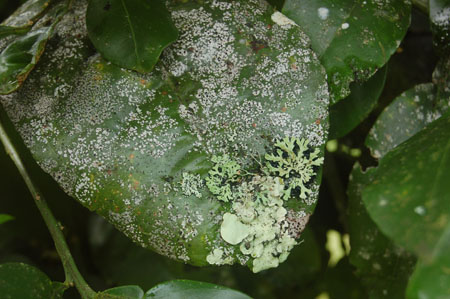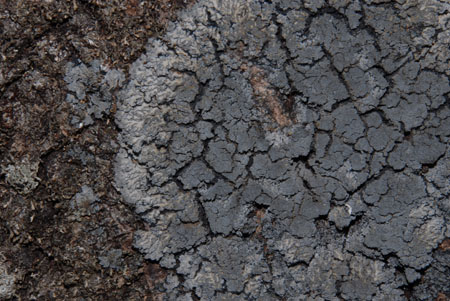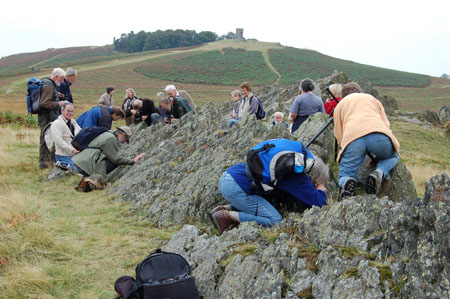




Lichens
In December 1971, Simon Davey met Dr Francis Rose who introduced him to lichens. Not only is this a fascinating group in its own right, being an associated organism including both fungi and algae, the ecological parameters in which they grow are restricted. Many are intolerant of chemical pollutants in the atmosphere. This allowed the study of lichens to bring the dangers of sulphur dioxide pollution and acid rain to public awareness. More recently, lichens are indicating a similar atmospheric malaise brought on by the addition into the atmosphere of alkaline pollutants, such as ammonia and nitrogen compounds.
Lichens are excellent as indicators of ecological health and history. Dr Rose and others developed a series of lichen lists, the presence or absence of the species on a list can be used to make an accurate assessment of ecological continuity. It is with these background interests that Simon Davey has undertaken a wide range of projects as a professional ecological consultant.
Simon Davey has undertaken lichen surveys for English Nature (now Natural England) in Devon and Cornwall as well as Sussex, Hertfordshire and East Anglia. For Scottish Natural Heritage, he has undertaken surveys in the Argyll and Bute area and for the Countryside Council for Wales most of his survey work has been in Merionethshire. Apart from these clients, work has come from a wide range of sources ranging from impact assessments for development projects to management advice for local government authorities and county wildlife trusts. Most recently, he has been making many visits to Jersey where he is working on a lichen flora for the island. This was published by the Société Jersiaise in 2015, called The Lichens of Jersey, copies have been selling well.
In 2003, he became the Field Meetings Secretary for the British Lichen Society. This position gave him a seat on the British Lichen Society’s Council as well as the task of organising a varied and exciting programme of meetings. These included specialist workshops of important and difficult lichen genera as well as some very exciting meetings abroad including the Sierra de Guaderrama in Spain, the Avalon Peninsula in Newfoundland as well as a meeting in Holland.